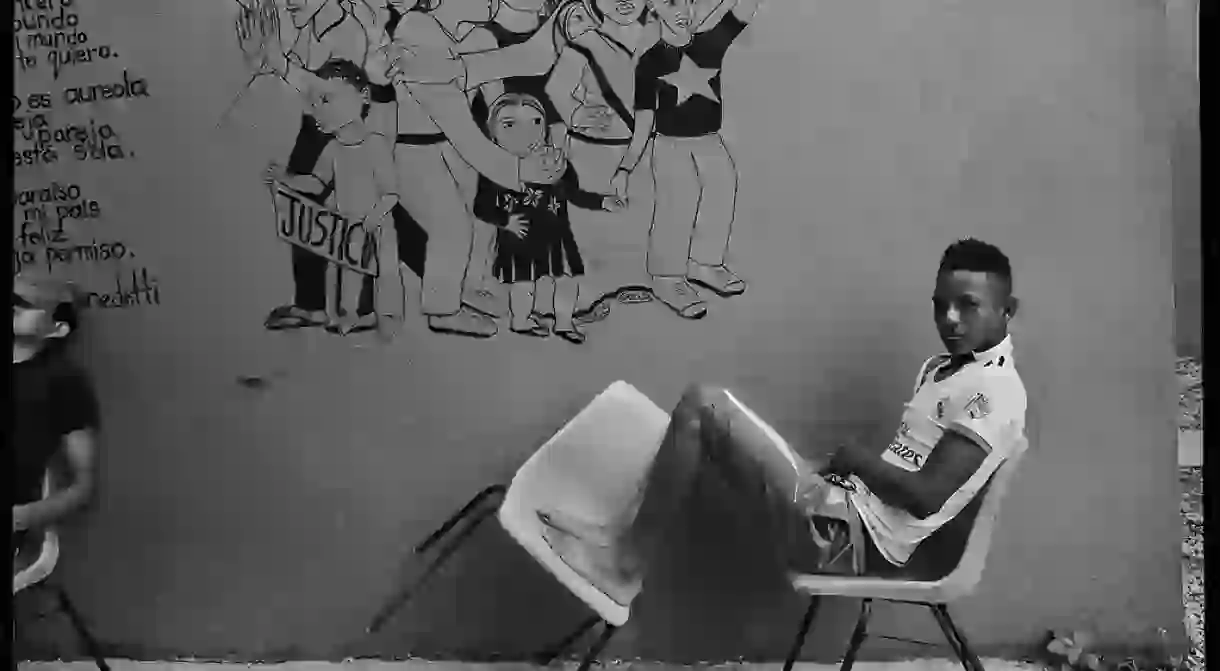Photographer Graciela Iturbide Captures The Global Refugee Crisis

According to the UN Refugee Agency, the number of displaced people has reached 65.3 million globally. In a timely exhibition, the Annenberg Space for Photography partnered with the UN to produce Refugee, an exhibit that showcased five photographers’ work who portray the multitude of refugee experiences worldwide. One of those photographers is Graciela Iturbide, whose work takes viewers to her native Mexico, as well as Colombia, where migrant workers and internally displaced indigenous people struggle to survive in precarious conditions.

Since the early 1970s, Iturbide’s work has brought her into intimate contact with various indigenous populations. In the past, she’s explored the lives and lifestyles of the Seri Indians in the Sonora Desert and then the Juchitán people in Oaxaca. She’s photographed Latino communities in East Los Angeles as well, as part of the photo-book project A Day in the Life of America.
Her work has long been lauded as injecting a magical realism or poetry into everyday life and that is partially the artist’s intention – as she recently told the BBC, ‘My intention is to look at life as if it were part of poetry.’ At the same time, Iturbide considers all photography to be documentary, calling the camera ‘a pretext to know the world.’

The works on display in Refugee strike the viewer in a more unfiltered documentary style. Through the photographer’s signature black-and-white images, viewers are granted a familiar intimacy with the particulars of these peoples’ plight – displaced children in Colombia scratch together improvised games or play in streets guarded only by a semblance of security in a makeshift humanitarian space.
In other photographs, Iturbide takes viewers to a Mexican shelter run by volunteer community members. Migrants from El Salvador and Honduras wait for meal times against the larger, longer waiting game of getting granted asylum; some fall in love, some seek work as life goes on within the shelter, whose walls are covered in murals by residents past, memorializing acts of violence against migrants, or histories of defiance. ‘To not have a country, to not have an identity, it’s like losing your soul,’ the photographer says in the exhibition’s accompanying film, which documents the experiences of Iturbide and the other featured photographers in the field.

Los Angeles, where the show has been on view, has a refugee crisis of its own. In the past year, the homeless population has increased to 47,000 people in LA county, two thirds of which live in improvised shelters and shantytowns on the city streets, The LA Times reports. At an artist talk earlier this year at the Annenberg, Iturbide explained the impact civil society can have when we turn our attention to the issues. ‘It’s up to us,’ she said.
As one of the most important and influential Latin American photographers of her generation, Iturbide shows no signs of stopping. Her extraction of poetic from the everyday is perhaps exactly the perspective shift necessary to inspire action.














